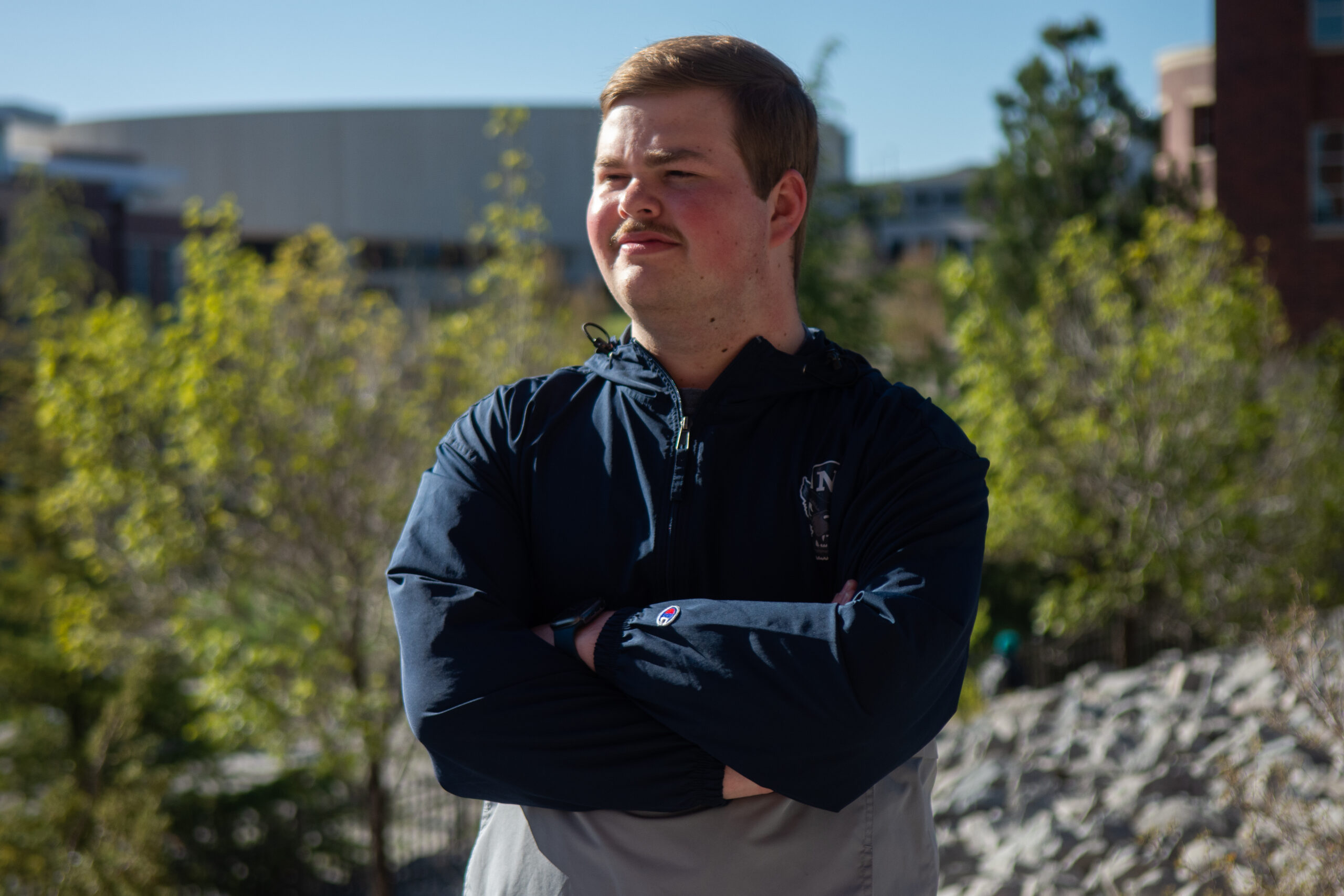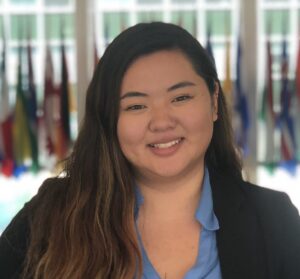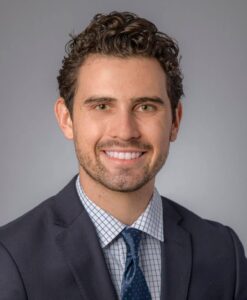Nevada borrowers set sights on more student loan relief as end of pandemic pause nears

Student loan debt totaling $33,000 has dampened the excitement surrounding graduation for Chris Lemke, a senior at UNR studying political science and Chinese. He has found the debt creeping into his thoughts more often.
He’s one of more than 330,000 Nevada residents, who — combined — owe student loan debt totaling approximately $11.5 billion. That’s close to $34,000 per borrower, and between 2010 and 2020, total debt increased 155 percent across the state.
Originally from California, Lemke received a tuition discount through an interstate partnership called the Western Undergraduate Exchange. One of the requirements for the program stipulated that Lemke must live on campus for the first year, which created financial difficulties for him. He said he paid about $15 per meal while on the cheapest meal plan.
Growing up in a single-parent household, Lemke said his mother couldn’t financially support him through school.
“According to [the Free Application for Federal Student Aid (FAFSA)], [my mother’s] expected contribution is like $13,000 a year towards my education, which is just unfeasible for most families,” Lemke said. “So I’ve had to take out private loans to pay for living on campus and then the maximum amount of federal loans for the rest of my tuition for the last few years.”
Lemke took out a private loan for $13,000 to pay for housing and food during freshman year between $6,000 and $7,000 every year — the maximum amount he could get from the federal government — totaling $20,000 in federal loans.
Undergraduate students pay a fixed interest rate of 3.73 percent on federal loans disbursed after July 1, 2021, and before July 1, 2022. Private loans can have variable or fixed interest rates, and they may be higher or lower than federal loans depending on the student’s circumstances. Federal student loan rates, which are adjusted every year in May, are expected to increase to about 5.1 percent, affecting those who will be taking out a new loan for next year.
Borrower balances have effectively been frozen for more than two years since March 2020, with more payments required on most federal student loans. During this time, interest has stopped adding up and collection on the defaulted debt has been on hold.
Last month, the Biden administration extended a pause on federal student loan repayments through Aug. 31, which was a welcome relief for many Nevadans. At 18 percent, the state has one of the highest student loan default rates in the country and many are hoping the extensions will continue.
While Democrats have argued that the seventh extension is too short and said it needs to be extended until at least 2023, Republicans have pointed out that the pause on interest and payments has cost the federal government at least $95 billion.
U.S. Sen. John Thune (R-SD) and others filed a bill dubbed “Stop Reckless Student Loan Actions Act,” late last month that would block the president from canceling student debt through an executive action and end the payment pause. They opposed the moratorium and said it overburdens certain taxpayers while benefiting borrowers with high incomes.
Amid the uncertainty surrounding the pause, Nevada residents with student loan debt are anxiously waiting to see what happens. For some, the moratorium simply helped keep them and their families afloat during a difficult financial period, while others were able to sock away money that otherwise would have gone toward interest payments.
A search for solutions
When the pandemic hit, Lemke lost his job at a movie theater because it was not considered an essential business by the state and was shut down. Although he eventually regained his job, he said it was one of the last type of businesses to reopen. To make matters worse, his mother also lost her job in the hospitality industry after working for close to 20 years.
“It was extremely hard on my family to navigate through the pandemic,” Lemke said. “We’re thankful for unemployment assistance, but it was just hard for all of us.”
Throughout college, Lemke has been heavily involved in the Associated Students of the University of Nevada (ASUN), a student government body representing campus concerns. Working with Assemblyman Howard Watts (D-Las Vegas), ASUN has advocated for student loan borrowers and promoted merit-based or income-based loan forgiveness.
Last year, lawmakers considered AB382, which established a student loan bill of rights for the state and set clear rights for student borrowers and rules of conduct for loan services. The bill, which could have protected students from predatory practices by private loan companies and federal services, fell short by one vote and did not pass.
“Student loans affect what we call non-traditional students — older students who are coming back to school to enter a new career field or get additional training — and it affects family members who are co-signing on student loans or supporting them otherwise,” Watts, who sponsored AB382, said in a call with The Nevada Independent.
Watts said he still believes it’s important to provide baseline protections for student borrowers and stressed the need for protecting families who are dealing with repayment. He added that as the state has a higher unemployment rate than the national average and a lot of people are still struggling to make ends meet, an additional extension of the moratorium could be beneficial.
Lemke said he supports President Biden’s extension on loan repayment because it helped debt management become feasible for graduates and because they will have more disposable income to contribute back to the economy. While he has heard that Congress might approve student debt cancellation altogether, he said he takes that with a “grain of salt” because he doesn’t want to get his hopes up.
Scheduled to start making payments in November, if the repayment pause is extended in the future, Lemke said he plans to put money into an emergency fund. He added that he also is hoping to finally pay for needed car maintenance and drive himself to work rather than relying on public transportation.
“Loans are not something I want to think about all the time,” Lemke said. “So I’ve kind of pushed it out of my brain as much as I can. But now that I am two and a half weeks away from graduating, I have to think about it now.”
Educating student borrowers

Amy Koo, political director with One APIA Nevada, was a first-generation college student whose parents immigrated from China. Because her parents didn’t speak English at all, she had to navigate the financial aid system and figure out how to budget her expenses by herself.
Koo had no other choice but to take out loans to subsidize her time at the University of California-Santa Barbara, where she earned a degree that helped her pursue a career in political advocacy. She said the financial woes were amplified because there weren’t many paid internships related to her field when she was in school.
Still, she considers herself luckier than many others because all of her loans were provided through the federal government and the amount could have been much greater if they were issued through private lenders. However, she added that her student loan payments will continue to be a burden for at least a couple of years, if not more.
Graduating in 2019 — just a year before the pandemic — Koo said she was one of the people who benefited from the payment pause. She was due to start making payments on her loans in January 2020, but the pause took effect shortly after and she only had to make an initial payment on schedule.
Since March 2020, instead of making regular payments, Koo has been saving lump sums to pay off her loans every couple of months. She said it has been very helpful to know that she’s not accruing interest on the money she already owes.
“The [housing] market in Las Vegas is very hot right now, but I was able to save up enough for at least a down payment,” Koo said. “So that’s something that I would have never imagined being able to do only a couple of years out of college, because I definitely anticipated having to pay off student loans.”
On his campaign trail, Biden pledged to cancel at least $10,000 per borrower. Most recently, he gave his strongest indication yet in a private meeting with House Democrats that he is going to take significant action to relieve student loans.
Koo said she doesn’t believe debt cancellation is the long-term answer to the student loan crisis, though. She said the solution lies in making colleges more affordable, providing more funding to public institutions and encouraging those institutions to prioritize low-income students or students who typically depend on student loans.
The struggle to pay off student loans is greater in rural communities with 1 in 5 borrowers over the age of 60 being delinquent, putting their Social Security and retirement income at risk. And students of color are more likely to amass student loan debts and less likely to be able to pay them off.
Koo stressed the importance of education about student debt so people can manage their finances better and understand the responsibilities they are taking on before signing up for loans. She said more support and transparency in navigating the financial systems can prevent a lifetime of financial burdens.
“A lot of students find out about their financial situations for the first time when they are applying for college because a lot of times parents don’t talk about the financial situation or the reality of what that means,” Koo said. “And so a lot of students are just not prepared for the financial burden of needing to pay for college or find it difficult to get in that mindset.”
In 2020, AB383 created a student loan ombudsman within the Nevada State Treasurer’s Office College Savings Division. The program seeks to educate student loan borrowers about their rights and responsibilities, create and administer a borrower education course and provide recommendations for policies through research and analysis of data.
Evelyn Castro, the state’s first student loan ombudsman, said the office offers programs such as College Kickstart, which gives a $50 scholarship to all kindergarteners who start in a public school in Nevada. The office also offers prepaid tuition, 529 plans (investment savings accounts for higher education) and the Governor Guinn Millennium Scholarship Program, which provides $10,000 scholarships to high school students based on academic achievement.
In the past, the Student Loan Ombudsman Program has reached out to community-based organizations such as churches and the Boys & Girls Club to provide education and resources regarding financing higher education. Castro said information is available in English and Spanish and they offer both in-person and online events for students and families.
“[Students should start planning] as soon as they are in high school junior year — that’s usually when students start looking into institutions that they are planning to attend,” Castro said. “It’s definitely important as soon as someone knows that they want to go to college, they need to be educated on what it takes to be a responsible student loan borrower.”
Debt but no degree
Armando Garcia was 18 years old when he took out a federal student loan. After attending UNLV for a little over a year as an anthropology major, he dropped out because of financial difficulties. Five years later, he is paying every month for a degree he never received.
After acceptance to the university, Garcia realized the need-based federal Pell Grant wouldn’t be enough to cover the cost of his tuition, so he decided to take out a loan to avoid burdening his parents. A year and a half later, the funding ran out and he decided to drop out and start working full time.
When asked whether he had received any assistance with the loan application or counseling about wise debt management, Garcia said he didn’t tell his parents he borrowed money because he didn’t wish to worry them. And when he sought help at UNLV, he said there were too many students and not enough counselors.
“The line was like almost two hours long just to reach them that day, and that’s obviously not something I could consistently do,” Garcia said.
He worked for Allegiant Airlines as a call center agent for two years until the pandemic hit. At that point, Garcia thought it would be unsafe to work in the travel industry and switched to pizza delivery driving. He recently started working as a safety manager for a transportation company in Las Vegas.
During the pandemic, Garcia said it was “pretty scary” because his salary as a pizza delivery driver was mainly dependent on tips and there was a lot of instability. He said there were several months when he struggled to make ends meet.
Garcia said he pays $50 — the minimum amount — toward his student loan every month. He made a late payment a couple of years ago and he said it brought down his credit score by about 60 points even though it was an isolated incident.
“I know when you pay the minimum amount, you are not really paying for the loan but you are paying towards the interest,” Garcia said. “And so I was only really able to afford the minimum payments ever since I took out the loan. I feel like I’m going to be paying it off forever.”
Since the repayment pause started, he said he has had one less bill to worry about. Garcia added that he hopes to buy a house for his family and to continue working toward his degree one day.
“[My parents] have been paying rents in Vegas for almost 20 years now and I’d like for them to have a house,” he said. “It’s just hard to even think about buying a house or maybe even moving out of Vegas when you don’t have the means to move anywhere.”
Garcia said canceling student debt would solve a lot of people’s problems. He said he is hoping for a chance to improve his credit score and get approved for a house at a decent interest rate.
“I feel like student loans are very predatory in the way that I was able to sign for a loan all by myself when I was 18,” Garcia said. “I was still a teenager. I’m 23 now, and I probably wouldn’t have signed up for a loan if I had the knowledge that I have now. It’s definitely something I regret.”
Getting ahead during repayment pause

Born and raised in Las Vegas, Andrew Goldsmith completed his undergraduate degree and law school at the University of Arizona. Family members had attended the university, influencing his choice to enroll there. But the out-of-state education came with a hefty price.
When Goldsmith graduated from law school, he had borrowed about $60,000. Of the total, $5,000 was from a private entity with an interest rate significantly higher than a government loan so he made sure to pay it off as soon as he could.
“I took out that $5,000 private loan because it was during the pandemic,” Goldsmith said. “I didn’t want to ask my parents to put money out of pocket.”
In 2020, Nevada students who attended public four-year, out-of-state schools paid about $27,000 on average, a significantly higher sum than $10,600 for public four-year, in-state college students.
Goldsmith’s student loan debt could have been much higher than $60,000, though. He received scholarships throughout his time at the University of Arizona — $9,500 per year during his undergraduate program and $7,500 per year during law school. And his parents helped him with the FAFSA application and made sure he had a 529 savings account, which lasted through much of the time he was in law school.
After graduating in May 2021, Goldsmith moved back to Las Vegas and started work as a law clerk at the Clark County Family Court, primarily working on child abuse and neglect cases. He lived with his parents for a year and saved up to make a down payment on a house in the Summerlin area.
“Without the student loan pause, I am doubtful that I would have had all the money available to make the down payment on the house, which means I probably would be living in an apartment right now,” Goldsmith said.
Regarding the moratorium, Goldsmith said it’s difficult to say what the best course of action would be to address student loans. While there’s a pervasive student debt crisis across the country, he said there’s also “an element of personal responsibility.”
Goldsmith pointed out that some will oppose debt cancellation because they have already paid off their student loans. But he said the repayment pause has helped him contribute more to the economy by purchasing a house.
“There are some proposals floating around that the president might cancel up to $10,000 of student debt, as opposed to canceling everyone’s debt,” he said. “I think that’s more feasible … It would be a good policy to give borrowers some relief but not necessarily relieve them of everything.”
